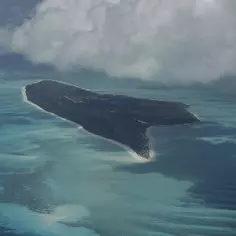
Environment and Biodiversity
Place
Scattered Islands, French Southern Territories
Grant(s)
€250,000 to the Board of Administration at 2010/03/15
Project leader
Taaf (French southern and antarctic lands)
The TAAF, which are French overseas territories, include the Kerguelen Islands, Adélie Land and the six Scattered Islands in the Indian Ocean, most of them between the coasts of Mozambique and Madagascar.
Relatively untouched by a human presence, apart from a handful of explorers, whalers, soldiers and scientists, the Scattered Islands represent a unique conservatory of animal and plant species: one of the world's foremost sea turtle egg hatching sites, they also shelter large and diversified populations of birds and are set in coral reefs unscathed by human activity.
The Taaf administration closely monitors the conservation of these "sanctuaries" and works effectively to protect them. For this purpose, TAAF and the Veolia Foundation have set up a sustainable partnership and drawn up an action program to accurately evaluate and preserve the biodiversity of the Scattered Islands. This partnership functions around two strategic guidelines: protecting the coral reefs of the islands; and preserving the land and marine biodiversity of Juan de Nova Island, which is more deeply marked by a human presence.
Removing and reprocessing twenty tons of tar
With the passage of time, human activities (guano mining, various missions, etc.) have led to the accumulation of various wastes on the Scattered Islands, particularly on Juan de Nova. In 2009, Taaf organized an exceptional tour of its ship, the Marion Dufresne, for a general cleanup of the islands. Over 650 tons of waste, mainly metallic, were collected, removed and reprocessed.
On Juan de Nova, these operations revealed the presence of wastes demanding specific treatment: mainly a series of oil drums, the residue of a landing strip built in the 1930s. The oil risked spreading to the nearby beach and contaminating this sea turtle hatching and tern nesting site.
In March 2010, the Veolia Foundation sent out two experts in waste management to Juan de Nova to make a diagnosis. Their mission was to identify the wastes, evaluate the methodology and feasibility of their reconditioning, removal and reprocessing.
Analyses identified twenty tons of hazardous industrial waste (HIW). The action plan calls for assigning five Veoliaforce volunteers for one week, before the fall of 2010, to isolate the drums in hermetically sealed containers, sort the sands, and decontaminate and analyze the remediated soil. TAAF and the French Army will then assist in removing the waste: the logistics are complicated because the island is so remote. The waste will then be eliminated in a Veolia Environmental Services incineration facility in continental France.
Unknown coral reefs
After this priority action, Taaf and the Veolia Foundation will continue their joint projects to promote biodiversity by the scientific observation of the coral reefs surrounding the Scattered Islands, which host a very abundant fauna and flora.
The reefs suffered in 1998 from the massive coral bleaching caused by a particularly intense El Niño phenomenon.However, scientific investigations indicate that the coral reefs of the Scattered Islands have begun a very slow process of restoration; this slowness has repercussions on the species whose development and survival depend on the state of health of the coral.
The Veolia Foundation is supporting Taaf in developing a scientific research program on the coral reefs in the Scattered Islands. These studies, conducted by IRD (Institute for Research for Development), will help compile an accurate inventory of the various lagoons and, ultimately, to develop the most appropriate conservation methods.

